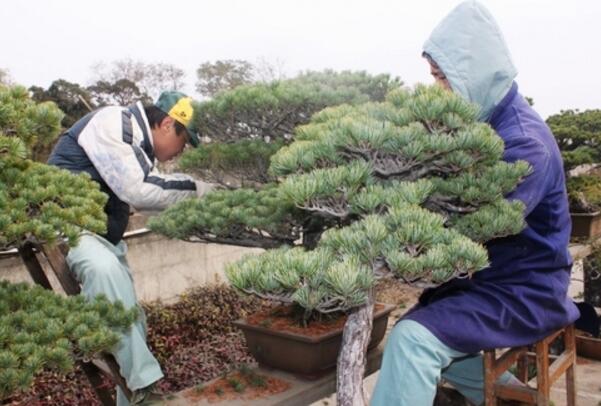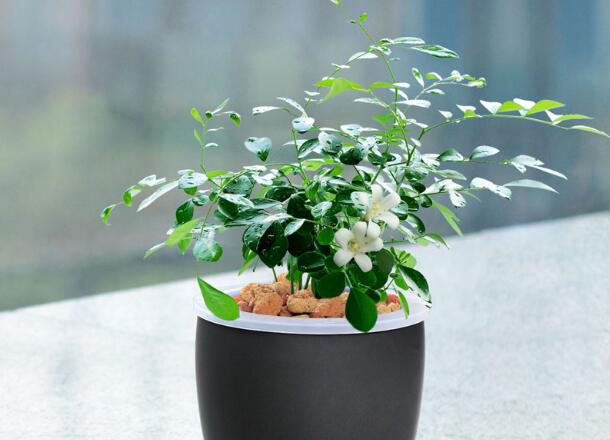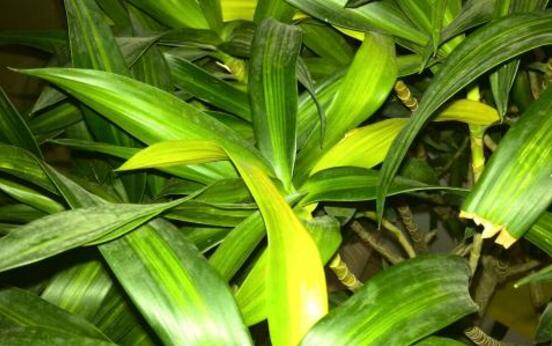How to prune Jiuli incense? when to prune Jiuli incense / before and after flowering to cut off diseased and weak branches
As a very strong ornamental plant, many flower friends of Jiulixiang are raising it, but there are too few people who can keep it beautiful. The reason for this phenomenon is closely related to pruning, because for the tall plant of Jiuli incense, the shape of the plant is very important, so how to prune it? When will Jiuli incense be trimmed? In this regard, it is up to the editor to solve everyone's doubts.
How to trim Jiuli incense, time / method

Whether it is the breeding method of Jiuli incense, or in how Jiuli incense spends the winter, we have talked about the importance of pruning. But in the flower friends who raise Jiuli incense, many of them are novice, and they often trim in the wrong place, either if they are trimmed correctly, they do not look good either. As for how to trim Jiuli incense to look better, we need to start with time and method.
2. When will Jiuli incense be pruned / method explained in detail
Pruning from January to April to May
For ordinary flower lovers, it is best to prune Jiuli incense in April-May every year. Specific measures: keep the trunk branches and leaves, and cut off some sick branches that are clustered or growing only. In addition, if in this period of time, it is found that the trunk branches grow to a suitable thickness, we can also prune the branches.
Pruning method: after cutting off the diseased and weak branches, we still need to observe the plant shape and prune again, so as to achieve an aesthetic effect. At this time, pruning is best maintained: each branch leaves about 3 branches (regardless of length), so that it is dense and rank. After this is done, although your Jiulixiang hasn't had a meeting yet, it must look good as a whole.
2. Pick the heart before flowering
Before flowering, in order to concentrate nutrients and produce more flowers, Jiuli incense needs to be heart-picked. The so-called heart-picking, that is, the removal of the upper part of the branches of the plant, which not only promotes the growth of new buds, but also controls the growth of the plant, laying the foundation for more flowering.
Pruning method: pick the heart when Jiuli incense grows new branches and has not yet grown. As for how much to remove, this is not fixed, you can do it according to your own preference. The premise is, a better shape, so as to make your Jiuli incense more beautiful.
3. Pick the bud
It is very important to prune and pick buds at an appropriate time. This method is used when plants grow unwanted tooth temples.
Pruning method: you can remove the excess teeth, which can not only ensure the normal growth of Jiuli incense, but also maintain the beauty of the plant and avoid the phenomenon of random growth of branches.
4. Picking leaves
How to prune Jiuli incense is more beautiful. In addition to picking hearts and buds, picking leaves is also necessary, because it can help the branches and leaves become more coordinated. In addition, picking leaves can also keep Jiuli incense in a vibrant state.
Pruning method: according to the shape of the growth of Jiuli incense, we can prune the leaves accordingly. Flower friends with a strong three-dimensional sense can often make the plant more beautiful after picking leaves.
5. Dormant pruning
For dense plants like Jiuli incense, proper pruning is very important. Grow dense, will consume too much nutrients, and after winter, Jiuli incense will dormancy, at this time is not suitable for fertilization, so at the end of autumn when the plant is about to enter the winter period, we should prune the plant.
Pruning method: we should cut off the dense branches or the over-long branches. Through this method of pruning, we can make the branch growth more extended, the shape of the branch more beautiful and moving, which is a relatively good method.
Generally speaking, the pruning time of Jiuli incense is very important. if you use the right pruning method at the right time, your Jiuli incense will blossom beautifully when June / July comes. It is worth mentioning that during the nine-mile fragrant flower period, everyone should not prune, it is easy to make mistakes, and its flower fragrance is very strong, close to smell too much, easy to get dizzy.
Detailed explanation of indoor rhododendron culture methods and matters needing attention
Rhododendron, alias are Yingshanhong, pomegranate, rhododendron, rhododendron, rhododendron and so on. There are many kinds of rhododendron, the leaf shape of rhododendron is different, its flower 2-6 cluster branch top, Corolla broad funnel-shaped, capsule oval. At present, rhododendron has become one of the most popular important flowers and trees at home and abroad. The editor will tell you the breeding methods and points for attention of azaleas! Culture methods:
First, environmental conditions: it is best to have indoor and indoor environments for the cultivation of rhododendron. The indoor environment is used in winter. Outdoor site, used in summer and autumn, it is better to use clay land, and avoid cement land. The site should be spacious, ventilated and shady, with shade sheds, covered with Reed curtains or protected by natural trees, with a light transmittance of about 30%. Avoid sunning at night.
Second, basin soil requirements: azaleas like loose, strong permeability, good drainage, humus-rich acid soil, the PH value is 5.0-6.0. If you use clay or alkaline soil, it is difficult to live. Summer cuckoos and rhododendrons, in particular, must be mountain soil. The mountain soil needs to be reformed. at present, three kinds of culture soil are usually used.
Third, flowerpot selection: cultivated rhododendron flowerpots, generally choose mud pots and purple sand pots. The mud basin is well ventilated and permeable, and it is used in the cultivation of production units. The molded azaleas, especially the modeled azaleas, are furnished for indoor and outdoor furnishings, generally planted in a beautiful and quaint purple sand basin with delicate texture, rich color and beautiful shape, which can double the ornamental value.
Fourth, improve water quality: it is best to use Rain Water to water azaleas, followed by river and pond water. If tap water is used, it is appropriate to store the water for 1-2 days and let the chlorine volatilize and then use. Add 0.2% ferrous sulfate when you use it, and water it every 10 days during the growing season. Use it frequently to ensure that the soil is acidic.
Fifth, fertilizer and water management: azaleas like yin and dampness, should not be too dry. More moisture is needed during flowering. The azaleas have entered a dormant period in winter and do not require much water. They are generally watered every 4-5 days, and should be carried out around noon on sunny and warm days.
6. outdoor shading: there should be more sunlight before leaving the room and before civilization; during flowering, shading should be carried out for a short time at noon, with a light transmittance of 60%.
7. Shaping and pruning: azaleas grow slowly and are generally allowed to grow naturally, only after flowering, cutting off long branches, diseased and weak branches, deformed branches and damaged branches.
Eighth, disease prevention and pest control: military insects (also known as crown net bugs) are sprayed 1500 times of dimethoate during the damage period, once every 7 days for 3 times in a row. The control methods of terminal bud leaf rollers are mainly killed by artificial capture, and the larvae or pupae can also be sprayed with 2000 times of dimethoate EC or 1500 times of dichlorvos. Note:
1. The roots of azaleas are as thin as hair, and there are few thick taproots. They are afraid of both dry and wet, especially heavy fertilizer. If too much watering, the root is soaked in water, too dry, branches and leaves atrophy, leaf petal fall off, a great threat to the plant, as for watering heavy fertilizer, it will be life-threatening.
2. after the flower fade, the residual flowers must be cut off to avoid fruiting and wasting nutrition. after the new branches germinate, they should be thinned properly and stay according to the growth of the plant.
3. Rhododendron is most suitable to be planted in a muddy basin, because the mud basin absorbs water and breathes air, which is beneficial to the growth and development of roots and luxuriant branches and leaves.
4. Potted azaleas should be placed on the southeast balcony and should be ventilated and moved as little as possible. If it is not ventilated, it is easy to suffer from black spot disease and a large number of fallen leaves.
5. Azaleas should also have moderate requirements for light, and avoid direct light in summer.
6. timely thinning of buds and leaves, removing part of the buds and leaves that have grown too much and too dense, so that the air is well ventilated and nutrients are concentrated on the buds. After the formation of buds, it is necessary to increase nutrition and apply more phosphorus and potassium fertilizer, otherwise the buds will be transformed into leaf buds.
7. The main reasons for azaleas falling leaves and not blooming are: too much direct light in summer, frostbite, too much watering, too thick fertilization, too long indoor time, poor air circulation or dark and humid places, acid rain, and so on. so these situations should be avoided in the process of maintenance.
8. Turning the basin and changing the soil do not need to be carried out every year, usually once every 2 to 3 years, with as little damage to the roots as possible. The time should be after the blossom fade or in autumn, and topirazine should be sprayed at the same time to prevent diseases.
9. The pests of azaleas are mainly red spiders and aphids, which can be sprayed with permethrin, and the effect is better, such as not dying after three days, spray again.
10. The propagation method of rhododendron is mainly cutting. Before and after Grain in Beard, select new branches, 5 cm to 10 cm long, cut off at the bifurcation point, peel off the lower leaves, leave 3 to 4 top leaves, insert the 1x3 of the branches into the soil, spray enough water, and cover with plastic film. It is necessary to strengthen the management at ordinary times and transplant a year later. [conclusion] Bai Juyi said: "if you take a closer look at the two branches in your hand, it doesn't seem to be in the world. This thing in the flower is Xi Shi, and the whip Rong peony is the mother." More Plant Information > > | touch incense | marigold planting | Happiness tree conservation method | Flower picture and name | the function of green radish flower | Wanlian | | Jiuli fragrant bonsai | crab claw orchid culture method | cactus culture method | how to raise gardenia | the role of lavender |
| | foliage plants | Aquatic plants | flowering plants | Insectivorous plants | bryophytes |
| | overall wardrobe | effect picture of rural cottage | Shelf decoration picture | ceiling keel picture | Nanmu furniture picture |
Osmanthus fragrans: planting techniques of Osmanthus fragrans
The fragrance of sweet-scented osmanthus is strong but not pungent, it is a mellow, long and beautiful taste. Pick a cluster of sweet-scented osmanthus branches from the blooming sweet-scented osmanthus tree, and its aroma will remain for a long time. Sweet-scented osmanthus wine, sweet-scented osmanthus cake and sweet-scented osmanthus tea will bring us the fragrant fragrance of sweet-scented osmanthus.
Osmanthus fragrans: planting techniques of Osmanthus fragrans
[plant archives]-
English name: Osmanthus fragrans
Scientific name: Osmanthus fragrans
Aliases: laurel, sweet clover, rhinoceros
Family: Oleaceae of Melilotus
Genus: sweet clover Osmanthus
Distribution: Osmanthus fragrans are native to southwest China, wild in Sichuan, Yunnan, Guangxi, Guangdong and Hubei, wild communities in Zhouluo, Liuyang, Hunan, and also in India, Nepal and Cambodia.
Morphological features: evergreen shrubs or small trees; leaves opposite, mostly oval or long oval, smooth, leathery, leaf margin serrated; autumn flowering, flower clusters growing in leaf axils, Corolla split to basal milk with milky white, yellow, orange-red and other colors, extremely aromatic; drupe is purple-black after maturity.
The growth habits of Osmanthus fragrans-
Sweet-scented osmanthus likes warmth and is suitable to grow in acid sandy soil with good drainage, deep soil layer, loose and fertile soil and rich in humus. It is not tolerant to drought and barren, the branches and leaves are sparse in the barren soil, the leaves are yellowing, rarely bloom, and the whole plant of sweet-scented osmanthus dies in serious cases. Young trees need a certain amount of shade and relatively sufficient light when they grow up.
Planting techniques of sweet-scented osmanthus trees
▲ pot: in the rainy days of spring and autumn, it is the best time to plant sweet-scented osmanthus trees. The location is in a warm place with good ventilation and drainage. Planting requires acidic soil. The composition of potted sweet-scented osmanthus potted soil is as follows: 2 parts of rotten leaf soil, 3 parts of sandy soil, 3 parts of garden soil and 2 parts of rotten cake fertilizer.
▲ light and temperature: sweet-scented osmanthus potted in winter moved into the indoor sunshine, fully accept direct light, room temperature to maintain more than 5 ℃, but not more than 10 ℃. After sprouting in April of the following year, the sweet-scented osmanthus tree was moved outdoors, first placed in the leeward to the sun, and then gradually moved to a ventilated sunny or semi-overcast environment after stable growth.
▲ water and fertilizer: keep the soil moist before sweet-scented osmanthus new technology is developed, do not irrigate fertilizer and water. Generally, nitrogen fertilizer is applied once in spring and phosphorus and potassium fertilizer is applied once in summer to make flowers bloom and flourish. Overwintering organic fertilizer is applied once before winter, mainly rotten cake fertilizer and barnyard manure. Avoid thick fat, especially faeces and urine. Potted sweet-scented osmanthus should be watered less in winter in the north, and after leaving the house in April, the amount of water should be increased appropriately in the growing season, and the fertilizer and water can be slightly thicker in the blooming season.
▲ plastic surgery: according to the posture of sweet-scented osmanthus trees, set the large frame, remove other gourd tillers, only long branches, too dense branches, diseased weak branches, cross branches. For those who are strong in tree strength and weak in tree strength, the upper branches can be cut short by 1 × 3, and at the same time, healing and anticorrosive film can be smeared on the pruning mouth to protect the wound, so as to make the whole tree strong.
Conclusion: sweet-scented osmanthus is a kind of plant which is very suitable for artificial cultivation. When planted in the courtyard, it can not only remove the smell, but also has a good meaning of fengshui. Whenever the breeze blows and the room is full of incense, the mood will naturally become better before you know it. Small sweet-scented osmanthus trees can also be potted.
[more Encyclopedia of plants]
Aloe jasmine radiation protection plant Tongqian grass potted bonsai production of drug plant mistletoe indoor flower fortune tree evergreen
Pot cultivation of rich bamboo in water to make anthurium mint raw stone geranium garden crab claw orchid plain sailing tiger skin orchid Kunlun snow chrysanthemum
Water lily flowerpot violet magnolia primrose mimosa blue witch hydroponic cyclamen dripping Guanyin peace tree rich bamboo
Jasper fragrant wood rose money tree blossoms June snow hydrangea Phoenix tail bamboo mosquito repellent rubber tree Luo Han Song upside down Golden Bell
Ivy, Cymbidium, Cymbidium, Yushu, bowl, lotus, nine li incense.
- Prev

How does Jiuli incense survive the winter, watering reduces the amount of light / proper pruning is very important.
For Jiuli incense, we should have heard of it, as its name, when the fragrance of flowers can float to nine miles away. Of course, it's a bit of an exaggeration, but it doesn't prevent us from raising it. However, in the maintenance throughout the year, Jiuli incense must be paid attention to in winter, because all kinds of problems will arise if you are not careful.
- Next

How do lily leaves turn yellow? learn 6 tricks to solve easily / light, water and fertilizer is the key.
The beauty of lilies is well known, so they are potted at home by many flower friends. However, the lily is a relatively weak plant, once we do not take good care of it, it will have problems, thus showing the symptoms of yellow leaves, what about the yellow leaves of lilies? According to the editor's summary
Related
- Fuxing push coffee new agricultural production and marketing class: lack of small-scale processing plants
- Jujube rice field leisure farm deep ploughing Yilan for five years to create a space for organic food and play
- Nongyu Farm-A trial of organic papaya for brave women with advanced technology
- Four points for attention in the prevention and control of diseases and insect pests of edible fungi
- How to add nutrient solution to Edible Fungi
- Is there any good way to control edible fungus mites?
- Open Inoculation Technology of Edible Fungi
- Is there any clever way to use fertilizer for edible fungus in winter?
- What agents are used to kill the pathogens of edible fungi in the mushroom shed?
- Rapid drying of Edible Fungi

